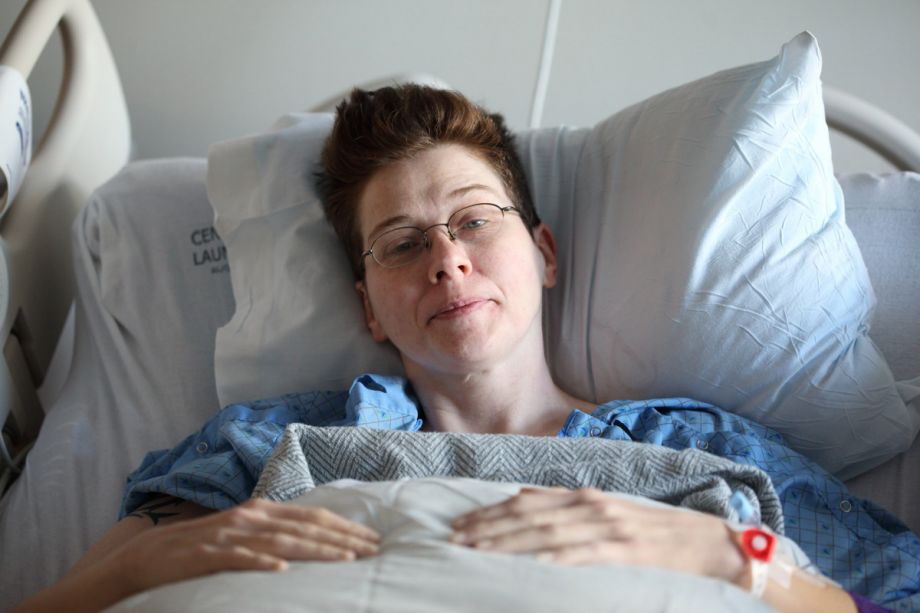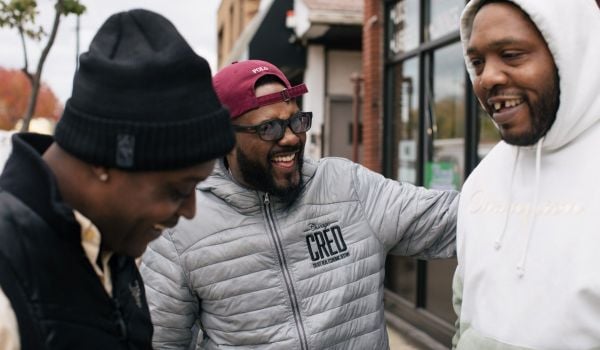Toledo City Council just approved a plan to turn $1.6 million in public dollars into as much as $240 million in economic stimulus, targeted at some of the Ohio metro’s most vulnerable residents.
“It’s really going to help people put food on the table, help them pay their rent, help them pay their utilities,” says Toledo City Council Member Michele Grim, who led the way for the measure. “Hopefully we can prevent some evictions.”
The strategy couldn’t be simpler: It works by canceling millions in medical debt.
Working with the New York City-based nonprofit RIP Medical Debt, the City of Toledo and the surrounding Lucas County are chipping in $800,000 each out of their federal COVID-19 recovery funds from the American Rescue Plan Act. The combined $1.6 million in funding is enough for RIP Medical Debt to acquire and cancel up to $240 million in medical debt owed by Lucas County households that earn up to 400% of the federal poverty line.
“It could be more than a one-to-100 return on investment of government dollars,” Grim says. “I really can’t think of a more simple program for economic recovery or a better way of using American Rescue Plan dollars, because it’s supposed to rescue Americans.”
Under the RIP Medical Debt model, there is no application process to cancel medical debt. The nonprofit negotiates directly with local hospitals or hospital systems one-by-one, purchasing portfolios of debt owed by eligible households and canceling the entire portfolio en masse.
“One day someone will get a letter saying your debt’s been canceled,” Grim says. It’s a simple strategy for economic welfare and recovery.
RIP Medical Debt was founded in 2014 by a pair of former debt collection agents, and since inception it has acquired and canceled more than $7.3 billion in medical debt owed by 4.2 million households — an average of $1,737 per household. CEO Allison Sesso says they switched from bright yellow envelopes to standard white envelopes a few years ago.
“We did some A-B testing and we realized that yellow envelopes just makes it feel more like a debt collection potentially,” Sesso says. “We always have to work hard to make sure we don’t look like we’re a collection agency. We haven’t collected a single dollar of any debt we’ve ever purchased.”
The partnership with Toledo and Lucas County is the third instance of the public sector funding RIP Medical Debt to cancel debt portfolios. Earlier this year, in the largest such example yet, the Cook County Board of Commissioners approved a plan to provide $12 million in ARPA funds for RIP Medical Debt to purchase and cancel an estimated $1 billion in medical debt held by hospitals across Cook County, which includes Chicago.
“Governments contract with nonprofits all the time for various social interventions,” Sesso says. “This isn’t really that far-fetched or different from that. I would say between five and 10 other local governments have reached out just since the Toledo story came out.”
An estimated one in five households across the U.S. have some amount of medical debt, and they are disproportionately Black and Latino, according to the U.S. Census Bureau. The average amount owed is $2,000. And the problem isn’t limited to the uninsured. As Sesso points out, many households with health insurance still end up with unpaid medical bills because the only health insurance plans affordable to them are high-deductible plans.
“It’s like signing up for a subprime mortgage,” Sesso says. “It’s a big problem, because the premiums for the more Cadillac plans, if you will, are out of reach for people.”
Acquiring medical debt is relatively cheap: hospitals that sell medical debt portfolios do so for just pennies on the dollar, usually to investors on the secondary market. The purchase price is so low because hospitals and debt buyers alike know that medical debt is the hardest form to collect. Nearly 60% of all debt held by collection agencies is medical debt owed by some 43 million households, according to the Consumer Financial Protection Bureau.
Even more households owe medical debt that hospitals haven’t yet sold to anyone. When it was first founded, RIP Medical Debt started out acquiring medical debt only on the secondary market, from debt collectors or other investors who had previously purchased portfolios from healthcare providers. But two years ago, RIP Medical Debt started going directly to hospital systems and offering to buy the debt that they were holding on their balance sheets.
“I couldn’t tell you where it comes from, but generally the number that’s out there is that only somewhere between 20% and 30% of hospitals overall sell their debt,” Sesso says. “That’s a lot of hospitals that don’t sell their debt on the secondary market, but those same hospitals will sell their debt to us because we’re doing it for a different purpose. So we’ve been able to open up part of the market to buy debt from hospitals that don’t otherwise sell their debt.”
A year ago, Sesso says, around a quarter of the debt RIP Medical Debt had ever purchased was direct from hospitals. Today nearly 50% of the debt the nonprofit has canceled was acquired directly from hospitals, and that segment of its portfolio is growing much faster than medical debt purchased from the secondary market. Sometimes it’s actually been the hospitals themselves that contact RIP Medical Debt before anyone else in their community.
The process is straightforward. After explaining RIP Medical Debt and its mission, they answer any questions including about reimbursement or regulatory issues, Sesso says. “And then we take it from there. We sign a non-disclosure agreement, we get a file from them, we analyze it, we come back to them and tell them what the analysis has shown, how much of it qualifies, what we would pay, and then we sign another agreement that transfers the debt to us, we send them a wire, and we start sending out letters.” Just like that, hundreds of lives are changed.
The big backend costs for RIP Medical Debt include costs to automate as much of the process as possible while also maintaining compliance with all the healthcare confidentiality laws and regulations around the secondary market for debt. That includes paying for access to credit histories to verify that households are under the 400% of the federal poverty line threshold.
“We only want to buy the debt for people that qualify, which usually ends up being 80-90% of what hospitals give us to analyze in the first place,” Sesso says.
The amount of debt canceled for any given household has ranged from $25 all the way up to six-figure amounts. Under IRS regulations, debts canceled under RIP Medical Debt’s model do not count as taxable income for households.
One important limitation so far has been around using public dollars to acquire debt from public hospital systems; ARPA rules prohibit RIP Medical Debt from using those dollars to purchase debt from county-run or city-run hospital systems. But as it has already been doing in Chicago, the nonprofit will continue raising private funds to acquire and cancel debt portfolios from public hospitals.
After not one but two donations from philanthropist MacKenzie Scott, totaling $80 million, RIP Medical Debt is planning for expansion. It’s using a portion of those dollars to create an internal revolving line of credit to expand to places where it can find willing sellers before it has found willing funders. The internal line of credit means the nonprofit now has new, albeit still limited, flexibility to acquire debt portfolios from hospitals first, then begin raising private or public dollars locally to replenish the line of credit later and make those funds available for other locations.
“People often ask, do you only work with nonprofit hospitals, or do you work with for-profit hospitals? And I’m like, I just want to get the debt, regardless of who created the debt. If it’s out there, I want it,” Sesso says.
Fundamentally, they are not solving the issue of medical debt, but easing its pressure from as many lives as possible – while also upping the pressure on lawmakers and the healthcare industry. “We’re intentionally taking the stories of the individuals whose debt we have resolved, and putting their stories out into the world with intention in a way that tries to push and create more of that pressure to fundamentally solve the problem,” she says.
This article is part of The Bottom Line, a series exploring scalable solutions for problems related to affordability, inclusive economic growth and access to capital. Click here to subscribe to our Bottom Line newsletter.

Oscar is Next City's senior economic justice correspondent. He previously served as Next City’s editor from 2018-2019, and was a Next City Equitable Cities Fellow from 2015-2016. Since 2011, Oscar has covered community development finance, community banking, impact investing, economic development, housing and more for media outlets such as Shelterforce, B Magazine, Impact Alpha and Fast Company.
Follow Oscar .(JavaScript must be enabled to view this email address)

















